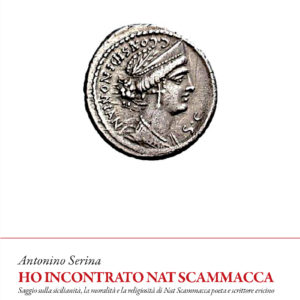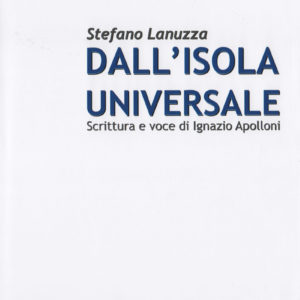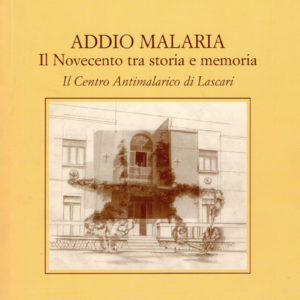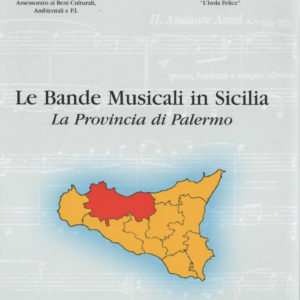Descrizione
Titolo: Gangivecchio. Una storia nei secoli
Autore: Glenn Storey
Editore: Edizioni Arianna
Pagine: 168
Prezzo: € 20,00
ISBN: 978–88–99981–61–7
Luogo di pubblicazione: Geraci Siculo
Anno pubblicazione: 2019
Here is told the story of periodic archaeological investigations at the site of Gangivecchio in east central Sicily, over the last 19 years. The main attraction at Gangivecchio, the 14thcentury Benedictine monastery, may sit on top of a Greco-Roman temple, dedicated to foreign Mother Goddesses or the Greek Demeter and Persephone. Nearby, a Roman villa, 100 meters to the east, participated in the agricultural miracle of Roman Sicily, perhaps owned and operated by a woman, who may have been herself or may have employed a medical practitioner specializing in obstetrics. As with any archaeological endeavor, the process is a tale of triumphs and setbacks, using state of the art ground-penetrating radar, and the simple old-fashioned physical labor of digging, largely by students from the United States. Gangivecchio, typical of myriad sites in Sicily, features a distinctly-felt sense of place, representing a long trajectory of human occupation, concealing mysteries as well as offering touchingly ordinary human objects recovered from its rich past.
At the personal invitation of the proprietress, Baronessa Giovanna Tornabene and her family, the University of Iowa commenced the Gangivecchio Archaeological Project (GAP) in order to assess the potential and feasibility of intensive archaeological investigations at the site. This was done under the auspices and with the collaboration of the Palermo Archaeological Superintendency (Soprintendenza dei BB. CC. AA, Palermo).
As many in this region of Sicily well know, there is a great unsolved mystery to be dealt with. Diodorus Siculus1 spoke of the great city of Engyon, “about 100 stades” (18 km) from his hometown of Agyrium (modern Agira). Diodorus speaks of a beautiful city, famous for its temple to the Cretan Mother Goddesses. This site has never been successfully identified archaeologically. The people of Gangi continue to debate whether Gangi, or Gangivecchio, could be the location of this place referred to by Diodorus. Many have impugned the reliability of Diodorus, but my excellent colleague at the University of Iowa, Peter Green, in a recent translation and commentary has revived the reputation of this unjustly maligned ancient historian.
However, instead of focusing on one of Diodorus’ statements, let us put together all the pieces of information he provides relevant to the question of Engyon. Engyon was founded by Cretans, in a “defensible” position. It took its name from a natural spring flowing through the city, which may have been accepted as an epiphany of the theai mēteres (Greek for “goddess mothers”). In order to maintain their favor (the continual flowing of the spring?) in the entire region, the people of Engyon built a temple to the goddess mothers out of fine stone from Agyrium, moving it over very rough country. That is the reason for Diodorus’ mention of distance. It was a notable expenditure of energy to transport stone about 100 stades over the mountains.
Fabio Angelini is of the opinion that it is likely that the people of the region built both urban and rural temples to the goddess mothers, and that Gangivecchio, with its natural springs, is a good candidate for being a rural cult center. After 19 years of work here, this seems confirmed.The springs made this place holy. If Gangivecchio were a cult center, for example, it might have been thought sufficiently significant to be included as an important Roman center. The importance of rural cult centers (some of which clearly grew to be almost city-like, such as Olympia and Eleusis in Greece) has been increasingly recognized in the last couple of decades. So, even if the site here were only a minor center, maybe even just a marketplace in the countryside — which were far more numerous and of crucial importance to the empire at large than we used to think — it would be an important object of study.
When I arrived for the first time, people in Gangi said they were surprised that an American archaeologist would be interested in coming here, the interior of Sicily. Weren’t all the foreign scholars eager to go to the big Greek sites on the coast? I was completely taken aback by this, perhaps because much of my training has been in prehistoric and Mesoamerican archaeology where we know the value of “small scale” archaeology. What excited me about Sicily here at Gangivecchio was a reflection on scholarly characterization of the interior of Sicily under the Roman Empire as a great unknown. So, even if Gangivecchio were not the great city of Engyon, I had a purpose here: to try and understand the nature of rural agricultural life and its significance to the functioning of the Roman Empire in the lesser known interior of Sicily. The study of the material culture of even small communities in the Roman Empire is crucial to understanding the nature of the Roman economy. This is a very important question, which has occupied much of my research.
What is most notable about Gangivecchio right now is the fabulous wealth of artifacts. That is the kind of data we need, from shipwrecks and small sites, illuminating patterns of production and consumption. The evidence of ceramics of all kinds – fine pottery, coarse ware pottery, lamps, amphorae, fired brick — and other commodities such as marble, glass and metal will help further this type of analysis (all of these are found at the site). We need to look at this evidence on small sites in the interior of Sicily especially, places such as Gangivecchio. This is what made Sicily a valuable part of the Roman Empire — the power of its agricultural life which is exactly what we are studying here.
As to Engyon? Well, let me say that after 17 years of work here, I am not sure about whether this could be the location of the fabled city. There is no solid evidence that this was Engyon. On the other hand, there is nothing that makes it impossible, either. Toponyms (Gangi and Gangivecchio from Engyon?) are not proof, but neither are they irrelevant. The question will be discussed long into the future.
The work of the University of Iowa has been conceived and carried out in three phases, imitating the North American Cultural Resource Management model: 1) Phase 1, non-systematic surface survey and limited test-pitting (one meter by one meter units); Phase 2), deployment of Ground Penetrating Radar (GPR) to look for the most promising locales on the site for investigation, followed-up by larger test pits (2 meter by 2 meter with extensions); 3) Phase 3, wide-strip excavation of select locations on the property carried out by university archaeological field school participants. Currently, the GAP is engaged in intensive excavations of the Phase 3 variety.
The archaeological work by the GAP was not the first archaeological investigation attempted. One previous investigation (carried out in 1974) concluded that Roman remains datable to the first to fifth centuries CE characterize the bulk of the remains, although the artifacts collected in that project were not analyzed, but neatly stored in the repository of the Archaeological Museum “Antonio Salinas” in Palermo. The conclusions of that project have been confirmed (and expanded) by subsequent work. One of us (Cerami), in 2009-2010, analyzed the 1,200 artifacts collected in the Summer 1974 project, noting that the artifacts in that collection dated from the second century BCE to the 9th century CE. Clearly, there is much more to the site of Gangivecchio than simply Roman occupation of the first five centuries of the Common Era. The work of the GAP goes on in order to better define the actual range and scope of human occupation at Gangivecchio. Most recently, in the Summer of 2019, a fourth University of Iowa Office for Study Abroad Field School worked at Gangivecchio. The results have continued to raise questions about the ultimate nature of the remains at Gangivecchio, even as the artifact take continues to be what can only be described as truly remarkable. We look forward to continuing the work, with ther University of Iowa field schools.
Glenn Storey, Introduction





